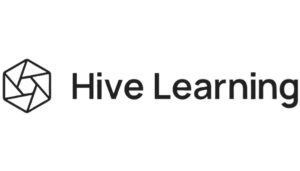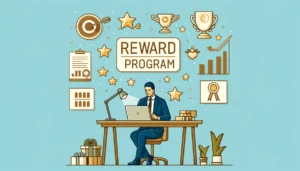HRD Roundtable Report: How to Make Education a Strategic Talent Investment
- 8 Min Read
How to Make Education a Strategic Talent Investment How do you turn your education program into a competitive advantage? Organizations are under ever-increasing pressure to perform and learning and development departments are no exception. What do HR leaders need to do to power-up and re-energise their education strategies to meet the needs of a changing […]
- Event Types
- Date of Event: Mar 3, 2022


How to Make Education a Strategic Talent Investment
How do you turn your education program into a competitive advantage? Organizations are under ever-increasing pressure to perform and learning and development departments are no exception. What do HR leaders need to do to power-up and re-energise their education strategies to meet the needs of a changing business?
Led by Stephen Vellecca, Director Learning & Development, Bloomingdales, and supported by further insights from Richard Burbank, Executive Director, Strategic Partnerships, Kaplan, this discussion was conducted under Chatham House Rules. This report will contain the key takeaways, and all participants will be anonymised.
Is L&D embedded in our other organizational strategies?
From across the group, we heard how L&D feeds into other parts of their businesses. Diversity & inclusion efforts for example, can be supported through creating opportunities to broaden who can be brought into the business. Through initiatives like specific mentoring for different demographics, and focusing on upskilling and transferable skills, organizations can truly impact their talent pools. Mentoring can and should be tailored to the needs of the group—for new grads, it could mean also having additional training, with the mentor being someone to check in with. For veterans, it might be more about creating a community with others who understand making the return to civilian life.
A high performing learning culture is also about creating inclusivity at every level in the business. One participant shared how they have looked at each cohort within their business to create an integrated talent strategy that understands each vital touchpoint in their careers. From there, they can also see where different L&D tools and offerings can be levers in those touchpoints—whether it be tuition assistance or leadership development programs. Integrating learning into the wider talent strategy and making it inclusive means it is more meaningful for each cohort and attractive to participate and invest their time.
Are our colleagues excited about education?
Some people really enjoy and embrace opportunities to learn, but there are many that find it difficult to find the time or choose not to engage. Where are our teams sitting? The consensus in the group was that engagement was good! Certification was a strong driver. One participant found that as many of their staff are in technical work, they see certifications as an important way of advancing their careers. Another HR leader shared stats showing that they are hitting around an 80% attendance rate (out of the 20% or so that spend more than an hour learning weekly), in particular for content that leads to certification. For another participant, their manager program is massively oversubscribed, to the point where they are probably going to need to turn people away.
How are we currently developing L&D strategies and offerings?
Support and input from leadership often play a large role in what is offered, but also important is the unique circumstances of the individual. For example, if someone is on a succession plan it only makes sense to encourage them to access leadership materials. Similarly, if someone is on a performance improvement plan, we need to make sure they have access to explore content to support.
We know that L&D plays a large factor in retention, so understanding what people want and need to see in the offering is vital. Again, technical skills and certification came up as key to employees seeing a future with the business. We heard from one participant who also shared their changing focus to succession planning and mentoring as a tool. A significant portion of their senior leadership is approaching retirement age, making space and progressing opportunities for those further down the business—if they can be trained up in time.
Are we still virtual?
Here we are seeing a mix. Many organizations are still entirely virtual, with plans to slowly reintroduce in-person training. For some kinds of development, like leadership development which is highly personalised, in-person is still favoured, with some pausing entirely until they could return to face-to-face.
Badging, certification, and balancing employer needs
Training that leads to qualification has come up again and again as attractive for employees, but we also need to discuss the tension between what employees want and what the business needs. Degrees for example are hugely desirable but take a lot of investment both from the employee and the organization. We heard from one participant that currently offers relevant degree support to employees who have been with the business for at least a year, something which sees a healthy uptake. However, other forms of certification can be achieved much faster and therefore be more immediately impactful. How do you decide which is more in serving of the organizations’ long-term strategy?
Internal badging is another form of certification worth exploring. The group discussed the possibility of creating academies with a focus on different skillsets identified as critical for the business, in order to make them accessible across the board. One participant shared their method for setting levels based on both online coursework and practical experience. For example, for level one, you might need 6 hours of coursework plus some workflow experience, all the way up to say 20 hours. This encourages a real commitment from employees. In order to develop the actual content, their L&D team works closely with internal experts to choose the areas that should be focused on and are most valuable.
Badging can also support natural career progressions and encourage people to stay within the orbit of the business for years. We heard an example from a participant that while quite industry specific, is a valuable idea to consider. They are in the education and behavioural health space, running clinics that require specialist training. They often have young people join them as highschoolers to get some experience and an entry-level certification. This gives them the boost to go to college for a semester or two, returning for more experience at a higher level, before they complete their degrees. Then, they often return full time and fully qualified. The business supports the employee throughout to grow and come back at each stage of their career with specific experience and knowledge of the clinic.
What key levers are driving learning engagement?
Having leadership that supports and encourages learning has been key. We also heard about partnering with marketing and comms teams to ensure that internal comms are getting high click-throughs and opens. Ambassadors can also be a great support in creating testimony videos, etc.
Engagement is also driven through transparency, i.e., if it is not clear why one person was chosen for a program and another rejected, it can deter engagement in the future. It is about creating a balance. Foundational level programs/curriculum should be available for all but for more advanced and specialized programs, or programs where the business needed to see a strong impact quickly, then that needs to be a conversation with the leadership teams about who and where is appropriate to receive that training. Perhaps then, those individuals can have sponsors to put them forward and help monitor progress. The process just needs to be open and transparent, so that opportunities are equal.
Making it clear we’re investing in employees
A concern that often comes up is that once an employee is upskilled, they will become an attractive hire and leave the business. How do we tie together investment and retention? One participant shared their approach of tying their badging and certification closely with performance reviews, so that it becomes embedded in the discussions with managers. This creates a thread that year-on-year, should allow people to see the investment made in them and reinforce the value the organization places on their contributions.
Openness to internal mobility is also important—learning and development can give employees a taste of other parts of the business that truthfully may suit them better. The challenge is in encouraging senior leaders to see this as a benefit for the business as a whole rather than a potential loss for their team individually.
Are we accessible?
Intent and engagement are a large part of learning but in reality, so are access and time. How are we addressing the logistics on learning access and available time to learn? Do you provide for WiFi access at home? Do you allow work time to take learning? Do you have learning cubicles accessible to all employees? Some organizations are introducing initiatives like no meeting days or ‘Focus Fridays’ to encourage people to take that time out of their daily workload for enrichment.
For service or frontline industries, the challenge is even harder. How do you provide that time when people are interfacing with customers, and you need to provide a 24/7 service? Or when colleagues are not at computers but in the field or on the road? Perhaps a full day is too much but could we find a couple of hours? What can we teach someone in a video of 5 minutes or less, then encourage that daily? One participant shared their success in making the LMS mobile accessible and focusing on things their colleagues could listen to while doing their physical tasks (like driving)—audiobooks, podcasts, etc. There is a lot to do in this space, but to get started, we can try to meet people where they are!








